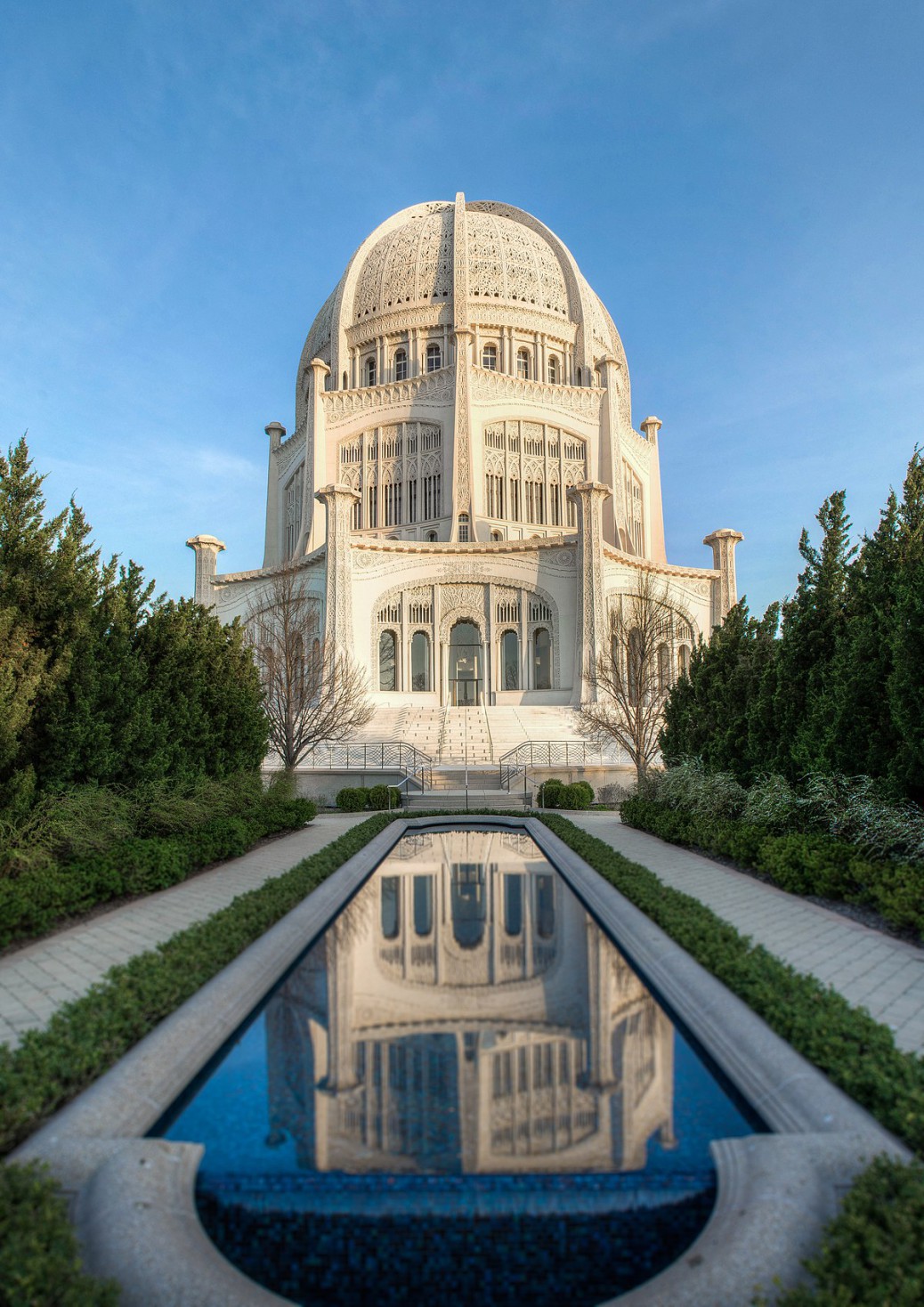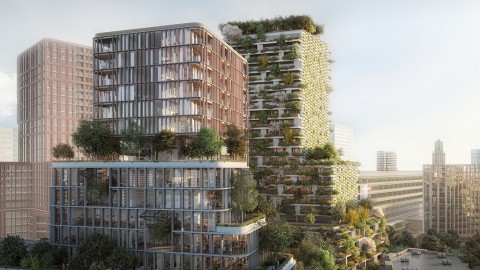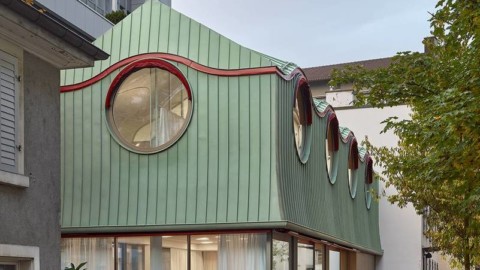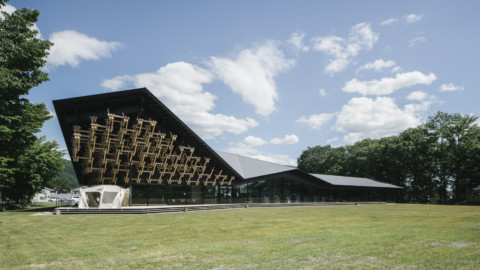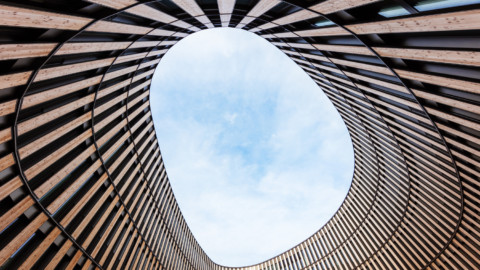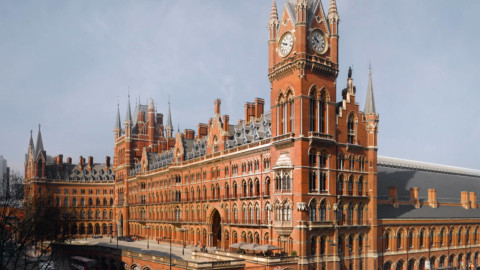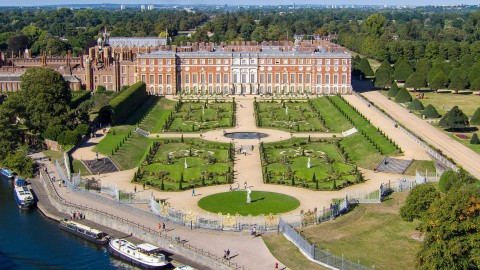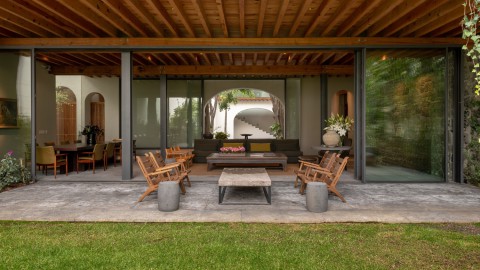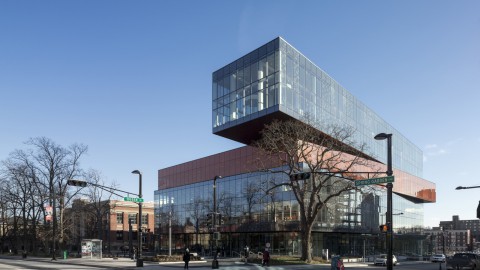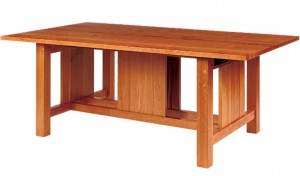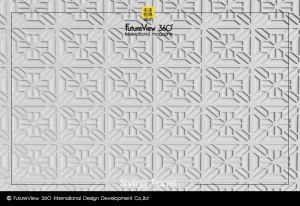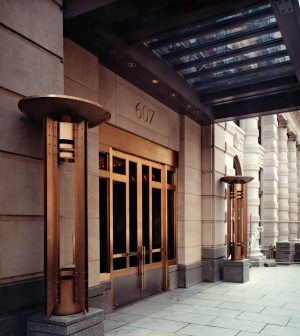Bahá’í House of Worship 巴哈伊教堂
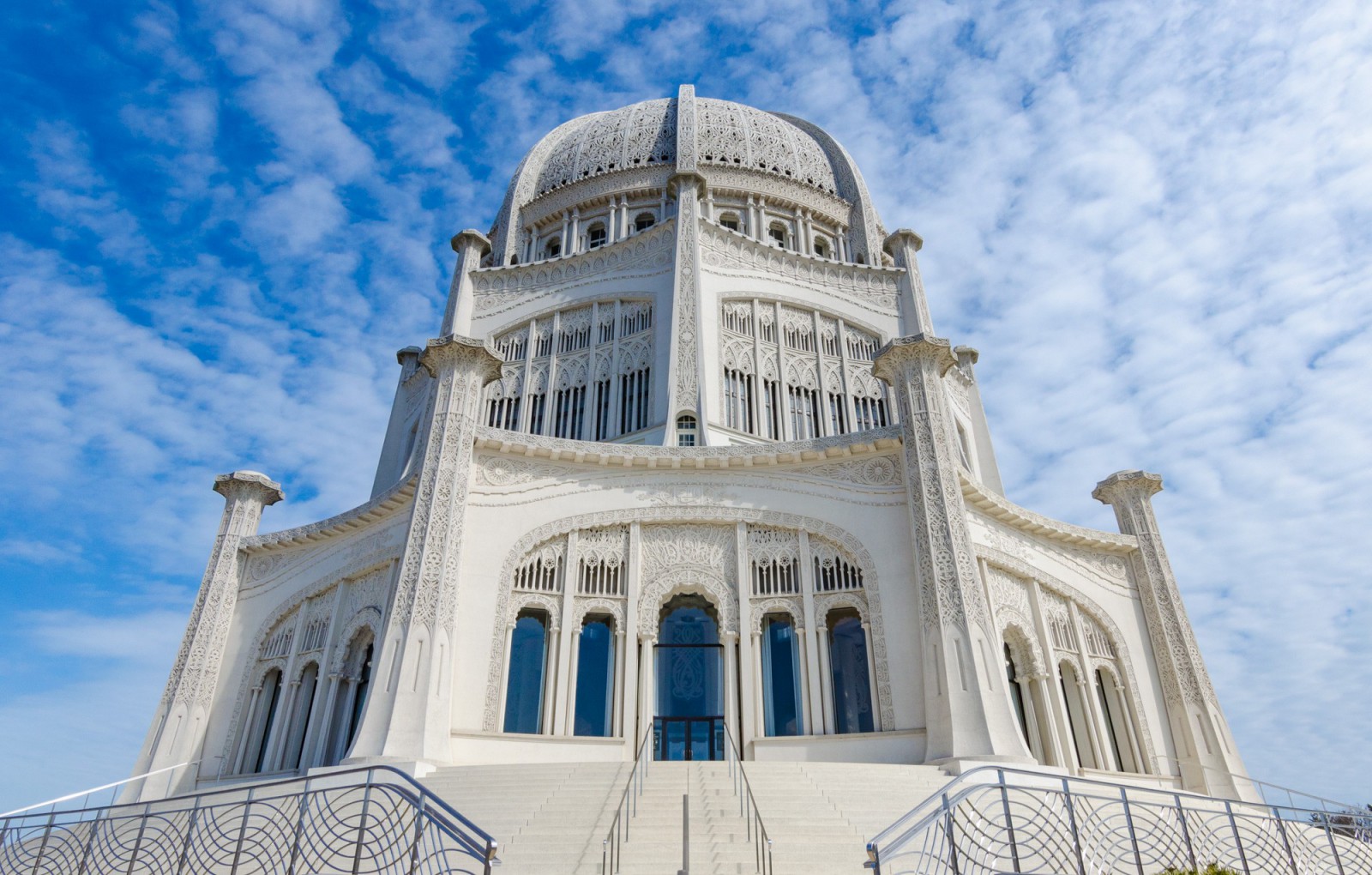
The Bahá’í House of Worship (or Bahá’í Temple) is a temple in Wilmette, Illinois. One of ten dedicated temples of the Bahá’í Faith, it is the oldest surviving Bahá’í House of Worship in the world.
巴哈伊教堂(或巴哈伊神廟)是伊利諾伊州威爾梅特的一座寺廟。 巴哈伊信仰的十個專門的寺廟之一,它是世界上現存最古老的巴哈伊禮拜堂。
Location:100 Linden Ave., Wilmette, Illinois
Coordinates:42°4′27″N 87°41′3″WCoordinates: 42°4′27″N 87°41′3″W
Area:6.97 acres (2.82 ha)
Built:1912-1953
Architect:Louis Bourgeois
George A. Fuller
地點:100 Linden Ave.,Wilmette,Illinois
坐標:42°4’27“N 87°41’3”W坐標:42°4’27“N 87°41’3”W
面積:6.97英畝(2.82公頃)
建於:1912年至1953年
建築師:Louis Bourgeois
喬治A.富勒
Early plans
In 1903, a small group of Bahá’ís in downtown Chicago first discussed the idea of a Bahá’í House of Worship in the Chicago area. At the time, the world’s first House of Worship was being built in Ashgabat, what is now Turkmenistan. The Ioas family was particularly involved in the first requests. A Bahá’í from Chicago named Corinne Knight True went on pilgrimage to British Mandated Palestine in 1907 to visit `Abdu’l-Bahá, then leader of the religion, and tell him of the growing interest in a local house of worship. During Thornton Chase’s pilgrimage, he had asked `Abdu’l-Bahá about it as well and was directed to work with True as “complete directions” had been given to her. A series of newspaper articles in the fall of 1908 including Chase among a set of women in several newspapers about the aim of the Bahá’ís to build it. This interaction led to the next development of a national sense of community: The election of the first national council of the religion, with delegates present from across the US and Canada, in the spring of 1909. Thirty percent of the members elected were women. `Abdu’l-Bahá gave his blessing to the project, but recommended that the structure be built away from the Chicago business district, in a more quiet area near Lake Michigan. The Bahá’ís considered building the temple in Chicago’s Jackson Park or the suburb of Evanston, but eventually settled on Wilmette, Illinois, just north of Evanston. True began coordinating work and acted as the treasurer of the growing effort and it became a solace to her life in the face of many personal challenges. Subsequently American Bahá’ís came to refer to her as “the mother of the Temple” and she was eventually appointed one of the Hands of the Cause of the religion. The Bahá’í administrative body True initiated by direction of `Abdu’l-Bahá, the Bahá’í Temple Unity, began purchasing land and gradually assumed larger responsibilities across communities until it was renamed the National Spiritual Assembly.
Bahá’ís from around the world gradually raised funds to pay for the project. For example, French Baha’is were noted as contributing even after facing the January 1910 Great Flood of Paris. A Chicago resident named Nettie Tobin, unable to contribute any money, famously donated a discarded piece of limestone from a construction site. This stone became the symbolic cornerstone of the building when `Abdu’l-Bahá arrived in Wilmette in 1912 for the ground-breaking ceremony during his journeys to the West. The actual construction of the building did not begin until the 1920s, after Bahá’ís agreed to use a design by Louis Bourgeois. The design was seen as a mixture of many different architectural styles.
早期計劃
1903年,芝加哥市中心的一小群巴哈伊教徒首先在芝加哥地區討論了巴哈伊教堂的想法。當時,世界上第一座禮拜堂正在阿什哈巴德建造,現在是土庫曼斯坦。 Ioas家族特別參與了第一次請求。來自芝加哥的一位名叫Corinne Knight True的巴哈伊在1907年前往英國強制巴勒斯坦朝聖,前往當時的宗教領袖阿博都巴哈,並告訴他對當地禮拜堂越來越感興趣。在桑頓大通的朝聖期間,他曾向阿博都巴哈詢問過這件事並被指示與True一起工作,因為已經給了她“完整的指示”。 1908年秋季的一系列報紙文章,包括Chase在幾家報紙上的一組女性中,關於巴哈伊建立它的目的。這種相互作用導致了國家社區意識的下一個發展:1909年春,第一屆全國宗教理事會選舉產生了來自美國和加拿大各地的代表。當選的成員中有30%是女性。阿博都巴哈對這個項目給予了他的祝福,但建議在芝加哥商業區附近建造這座建築,在密歇根湖附近一個更安靜的地方。巴哈伊考慮在芝加哥傑克遜公園或埃文斯頓郊區建造這座寺廟,但最終定居在埃文斯頓以北的伊利諾伊州威爾梅特。真正的開始協調工作,並成為不斷增長的努力的財務主管,面對許多個人挑戰,它成為她生活的慰借。隨後美國巴哈伊將她稱為“聖殿的母親”,並最終被任命為宗教聖道之一。巴哈伊行政機構真正由阿博都巴哈的方向發起,巴哈伊神廟統一,開始購買土地,並逐漸承擔更大的社區責任,直到它被重新命名為國家精神大會。
來自世界各地的巴哈伊教徒逐漸籌集資金來支付該項目的費用。例如,法國巴哈伊教徒甚至在面對1910年1月的巴黎大洪水之後也被認為是有貢獻的。一位名叫Nettie Tobin的芝加哥居民無法捐款,他從一個建築工地捐贈了一塊廢棄的石灰石。當阿博都巴哈於1912年抵達威爾梅特參加他在西部旅行期間的奠基儀式時,這塊石頭成為建築的象徵性基石。直到20世紀20年代,在巴哈伊同意使用Louis Bourgeois的設計之後,建築的實際建築才開始。該設計被視為許多不同建築風格的混合體。
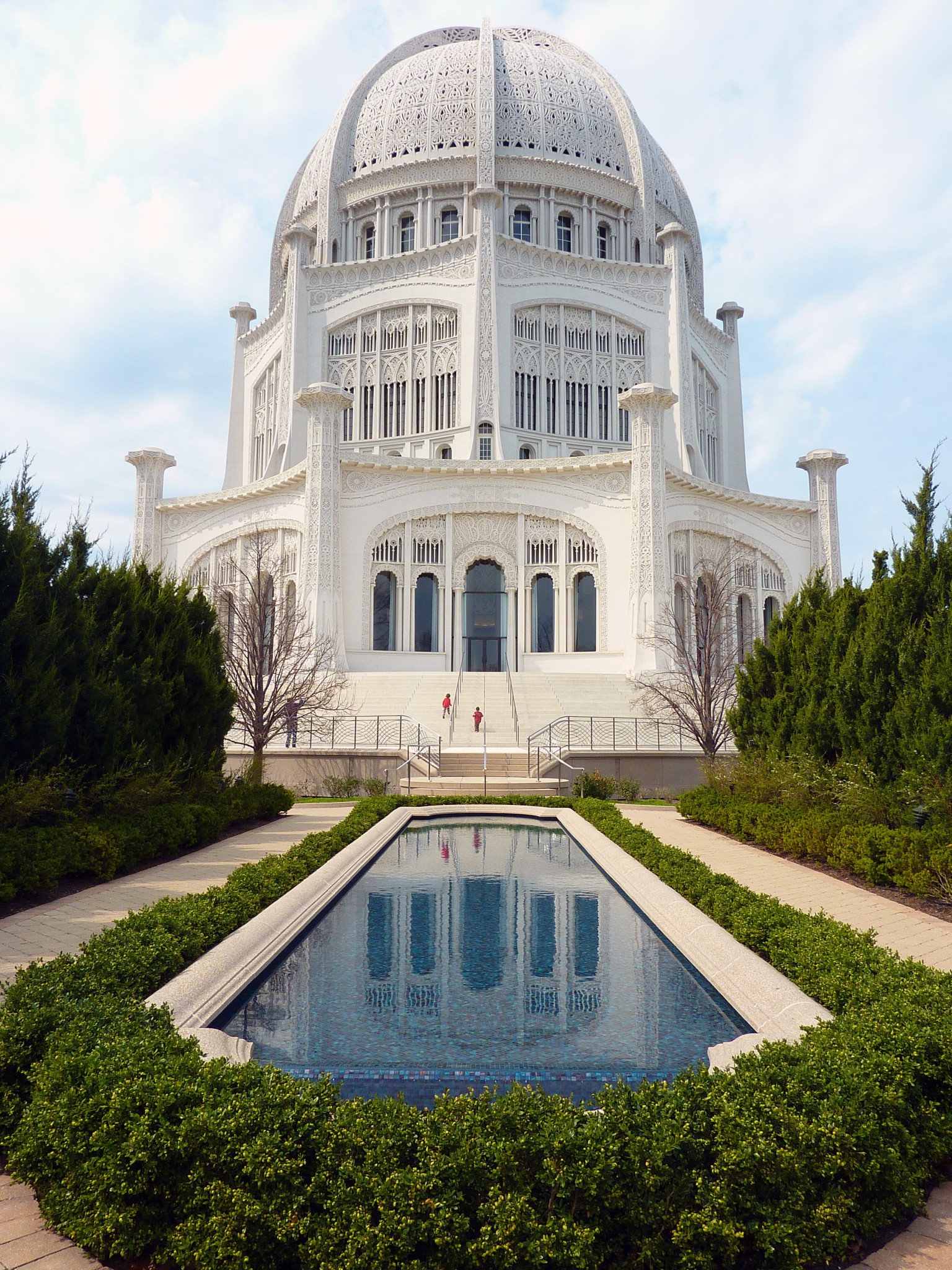
Construction
By 1922, the first part of the building, the Foundation Hall, was mostly finished, and Bahá’ís began using it as a meeting place. Progress on construction soon stalled, however, as funds began to dwindle, and residents of Wilmette began expressing displeasure with the construction site. At this point, many strange rumors about the structure began to circulate. Some people believed that the building was used by the Bahá’ís to keep a live white whale. Others said that the building was a refueling station for captured German submarines that had been brought to the Great Lakes.
Construction resumed as contributions from Bahá’ís began to increase, and in 1930, the George A. Fuller Company was hired to complete the building’s superstructure. The superstructure was completed in 1931, and a year later, John Joseph Earley was hired to begin work on the building’s concrete cladding. A model of the temple was placed on display at Chicago’s 1933–34 Century of Progress Exposition, and people began travelling to Wilmette to see the building taking shape. The Temple was featured in a US Postal stationary stamp onto envelopes in the 1930s.The exterior of the building was completed in January 1943.
Work remained to be done on the interior cladding of the structure, as well as the landscaping around the building. Louis Bourgeois’ designs for the interior were incomplete. He had died in 1930, before he could finish his plans, so in 1947, Alfred Shaw was hired to work on the interior detailing of the building. By the 1940s the Temple was again featured by the US Postal Service and was used by the US Navy during World War 2 as a rendezvous point for training fighter pilots from the nearby Glenview Naval Air Station, and, by 1946 to mark a flightpath of a Navy Mars Seaplane. A plan for the building’s gardens was approved in 1951, based on a design by Hilbert E. Dahl.
施工
到1922年,建築的第一部分 – 基礎大廳,大部分都已完工,巴哈伊斯開始將其用作會議場所。然而,隨著資金開始減少,建築業的進展很快停滯不前,威爾梅特的居民開始對建築工地表示不滿。在這一點上,許多關於結構的奇怪謠言開始流傳。有些人認為這座建築被巴哈伊教徒用來養活白鯨。其他人說,這座建築物是為被帶到大湖區的被俘的德國潛艇加油站。
由於巴哈伊的捐款開始增加,施工重新開始,1930年,George A. Fuller公司被聘用來完成建築的上層建築。上層建築於1931年完工,一年後,John Joseph Earley被聘請開始建造混凝土覆層。在芝加哥1933年至1934年的世紀進步博覽會上展出了一座寺廟模型,人們開始前往威爾梅特觀看建築物的形成。該寺廟於1930年在美國郵政的固定郵票上出現在信封上。該建築的外部於1943年1月完工。
該建築的內部覆層以及建築周圍的景觀仍有待完成。路易·布爾喬亞的內部設計不完整。他在1930年去世之前就已經完成了他的計劃,所以在1947年,Alfred Shaw被聘請參與建築物的內部細節。到了20世紀40年代,聖殿再次成為美國郵政局的特色,並在第二次世界大戰期間被美國海軍用作訓練戰鬥機飛行員從附近的格倫維尤海軍航空站的交會點,並且到1946年標誌著一條飛行路徑。海軍火星水上飛機。根據Hilbert E. Dahl的設計,該建築花園的計劃於1951年獲得批准。
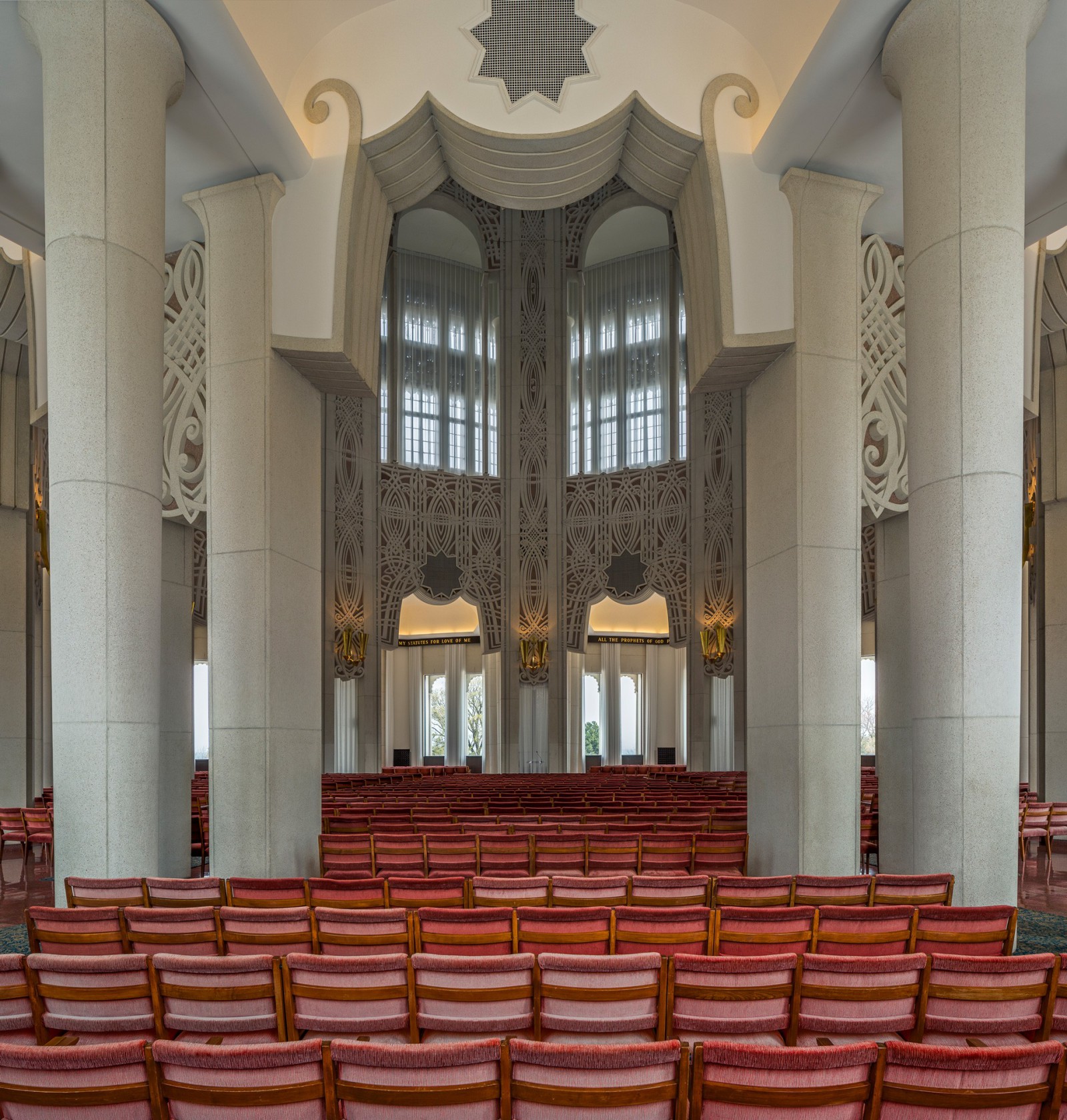
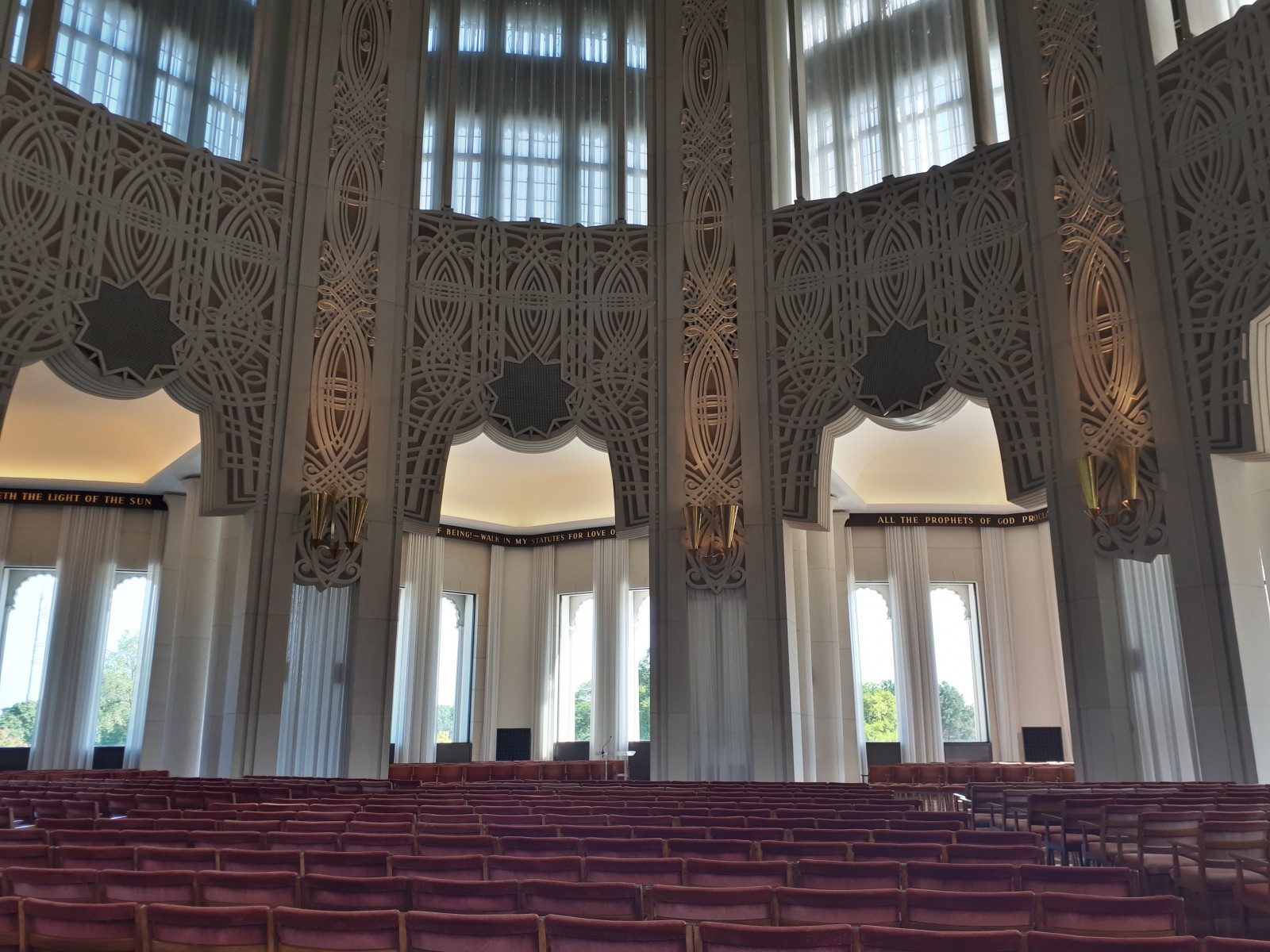
Dedication and legacy
The temple was finally dedicated on May 2, 1953. Over 3,500 people attended the services, including 91-year-old Corinne True. Ruhiyyih Khanum, the wife of Shoghi Effendi (head of the religion after the death of `Abdu’l-Bahá), read a prayer at the dedication. Several prominent figures, such as Supreme Court Justice William O. Douglas and future justice Thurgood Marshall, sent messages of praise to the Bahá’ís.
In 1978, the House of Worship was added to the National Register of Historic Places. The building has become a popular destination for tourists, and the Illinois Office of Tourism has named it one of the “Seven Wonders of Illinois”. In 2012, the Baha’i community of the United States celebrated the 100 years of the temple cornerstone dedication. In celebration of the 2018 Illinois Bicentennial, the Baha’i House of Worship was selected as one of the Illinois 200 Great Places by the American Institute of Architects Illinois component (AIA Illinois) and was recognized by USA Today Travel magazine, as one of AIA Illinois’ selections for Illinois 25 Must See Places.
奉獻和遺產
這座寺廟最終於1953年5月2日投入使用。超過3,500人參加了這項服務,其中包括91歲的Corinne True。 Shoghi Effendi(阿博都巴哈去世後的宗教領袖)的妻子Ruhiyyih Khanum在奉獻精神中讀了一個禱告。一些著名人物,如最高法院大法官威廉·道格拉斯和未來的正義瑟古德·馬歇爾,向巴哈伊信徒發出了讚美信息。
1978年,禮拜堂被列入國家史蹟名錄。該建築已成為遊客的熱門目的地,伊利諾伊州旅遊局將其命名為“伊利諾伊七大奇蹟”之一。 2012年,美國巴哈伊社區慶祝了寺廟100年的基石奉獻。為慶祝2018年伊利諾伊州二百週年紀念,巴哈伊禮拜堂被伊利諾斯州美國建築師協會(AIA Illinois)選為伊利諾伊州200大景點之一,並被“今日美國旅遊”雜誌評為AIA之一。伊利諾伊州選擇伊利諾伊州25必看地方。
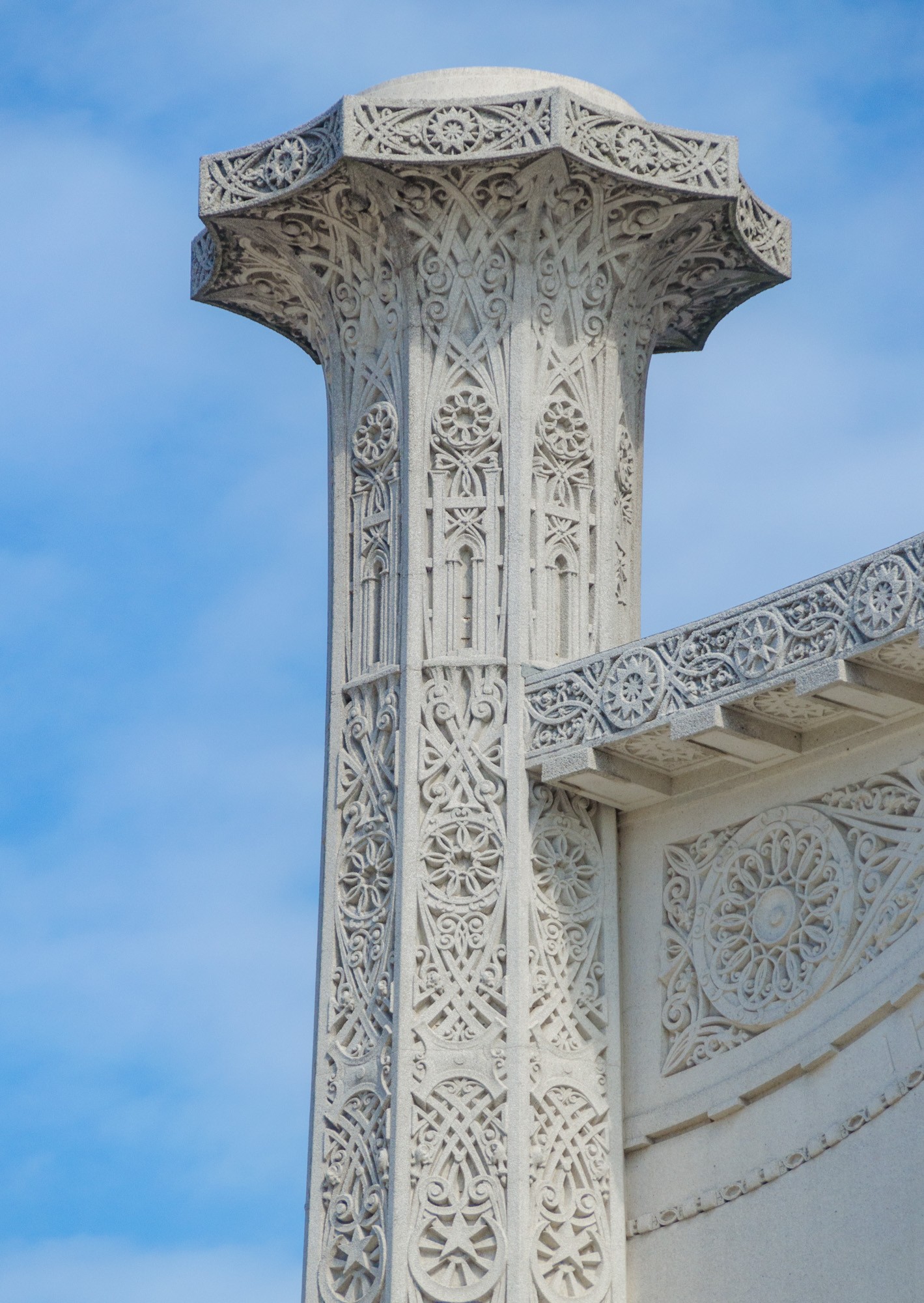
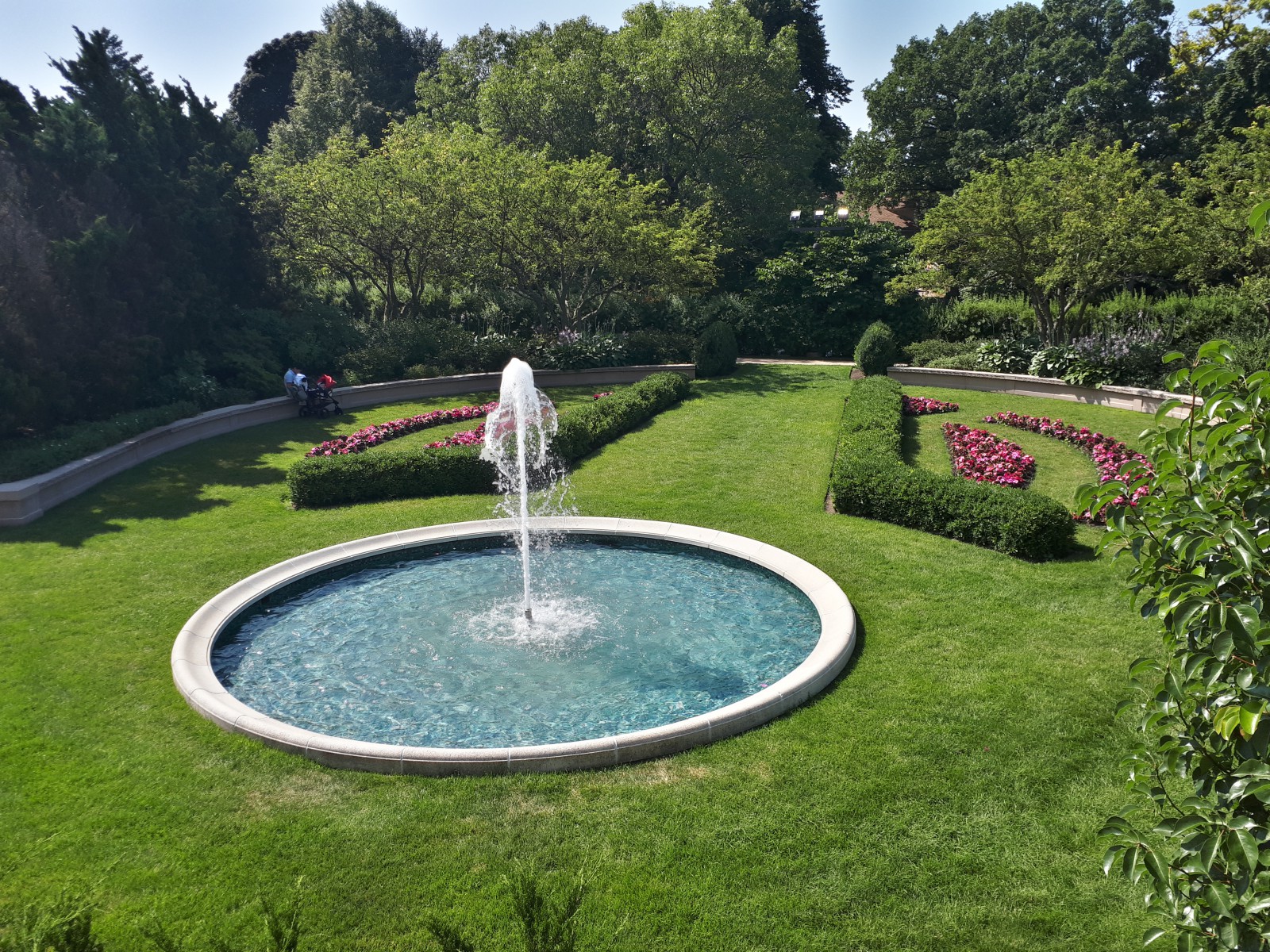
Features
The top of the dome is covered in intricate lace-style detail.
The House of Worship is a domed structure surrounded by gardens and fountains on a 6.97 (2.82 ha) acre plot of land. The space between the floor of the auditorium and the ceiling of the dome measures 138 feet (42 m) high, and the interior of the dome is 72 feet (22 m) in diameter. The auditorium seats 1,191 people.
Since nine is the last number in the decimal system, Bahá’ís believe it symbolizes perfection and completion. Nine is also the value of the word Bahá (Arabic for “glory”) in Abjad numerology. Thus, many elements of the building occur in groups of nine. For example, there are nine entrances to the auditorium, nine interior alcoves, nine dome sections, and nine fountains in the garden area.
The cladding of the building is composed of a concrete mixture of portland cement and two types of quartz. Many intricate details are carved into the concrete. Various writings of Bahá’u’lláh, the founder of the religion, are inscribed above the building entrances and inside the interior alcoves. Symbols of many religions, such as the Christian cross, the Star of David, and the star and crescent, can be found in each exterior pillar. The pillars are also decorated with a symbol used by Hindus, and Buddhists in the form of a swastika. At the top of each pillar is a nine-pointed star, symbolizing the Bahá’í Faith.
Inside the center of the dome ceiling, one can see an Arabic inscription. This is a Bahá’í symbol called the “Greatest Name”; the script translates as “O Thou Glory of Glories”. The secretary of Shoghi Effendi writing on his behalf explained, “By ‘Greatest Name’ is meant that Bahá’u’lláh has appeared in God’s greatest name, in other words, that he is the supreme Manifestation of God.”
Architect Louis Bourgeois’ former studio sits across the street from the House of Worship at 536 Sheridan Road.
特徵
圓頂頂部飾有復雜的蕾絲風格細節。
禮拜堂是一個圓頂結構,周圍環繞著花園和噴泉,佔地6.97英畝(2.82公頃)。禮堂地板與圓頂天花板之間的空間高138英尺(42米),圓頂內部直徑72英尺(22米)。禮堂可容納1,191人。
由於九是十進制中的最後一個數字,巴哈伊認為它像徵著完美和完成。九也是Abjad命理學中的巴哈(阿拉伯語為“榮耀”)這個詞的價值。因此,建築物的許多元素以九個為一組。例如,禮堂有九個入口,九個室內壁龕,九個圓頂部分和花園區內的九個噴泉。
建築物的覆層由波特蘭水泥和兩種石英的混凝土混合物組成。混凝土中刻有許多複雜的細節。巴哈歐拉(宗教的創始人)的各種著作都刻在建築物入口上方和內部壁龕內。許多宗教的象徵,如基督教十字架,大衛之星,以及星和新月,都可以在每個外柱中找到。柱子上還印有印度教徒使用的符號,以及sw字形式的佛教徒。在每根柱子的頂部是一個九角星,象徵著巴哈伊信仰。
在圓頂天花板的中心,人們可以看到阿拉伯語題字。這是一個叫做“最偉大的名字”的巴哈伊符號;該劇本翻譯為“榮耀的榮耀”。守基·阿芬第的書記代表他寫道:“’最偉大的名字’意味著巴哈歐拉出現在上帝最偉大的名字中,換句話說,他是上帝的至高顯聖者。”
建築師路易斯·布爾喬亞(Louis Bourgeois)的前工作室坐落在謝里登路(謝里登路536號)的眾議院對面。
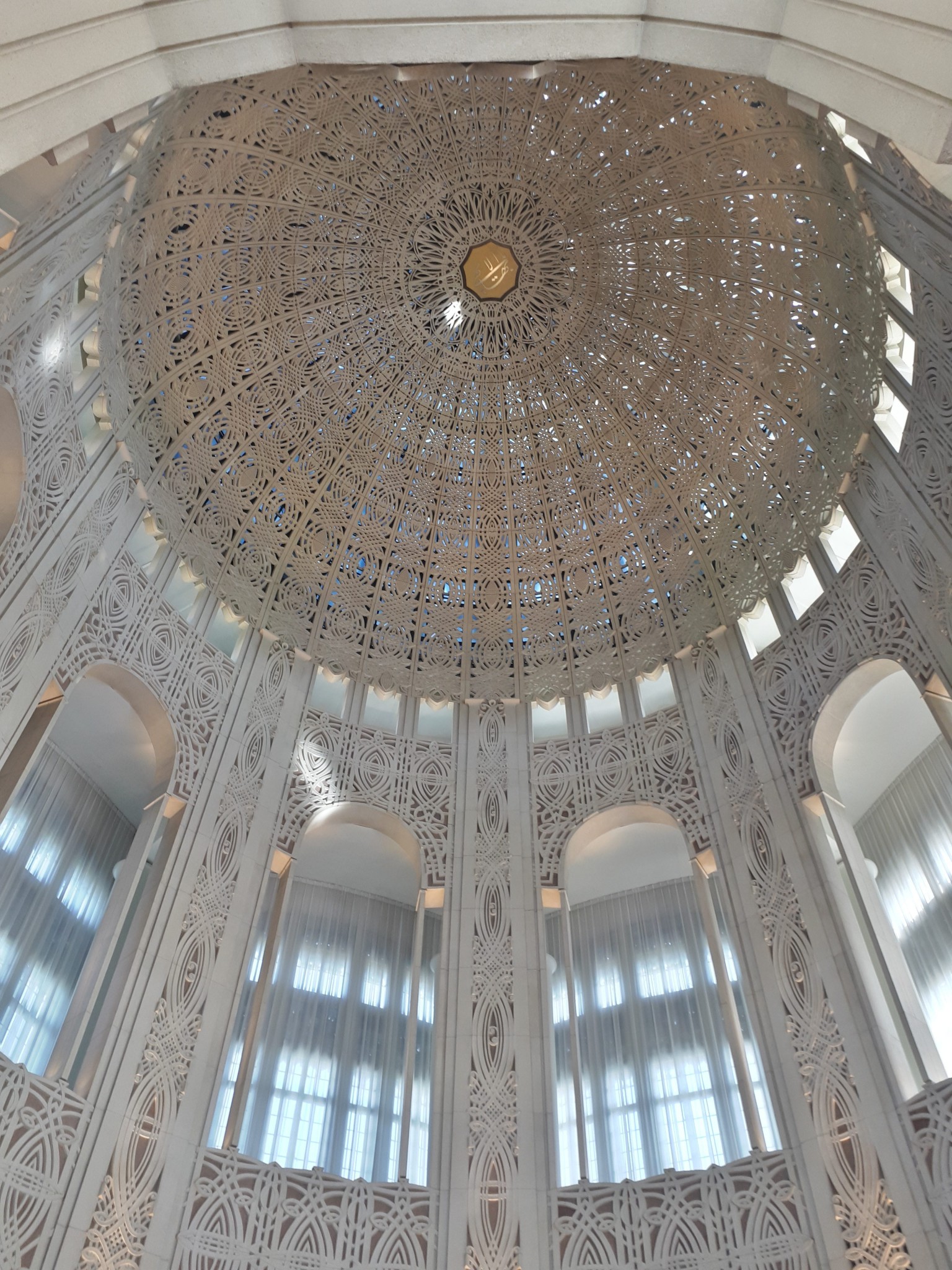
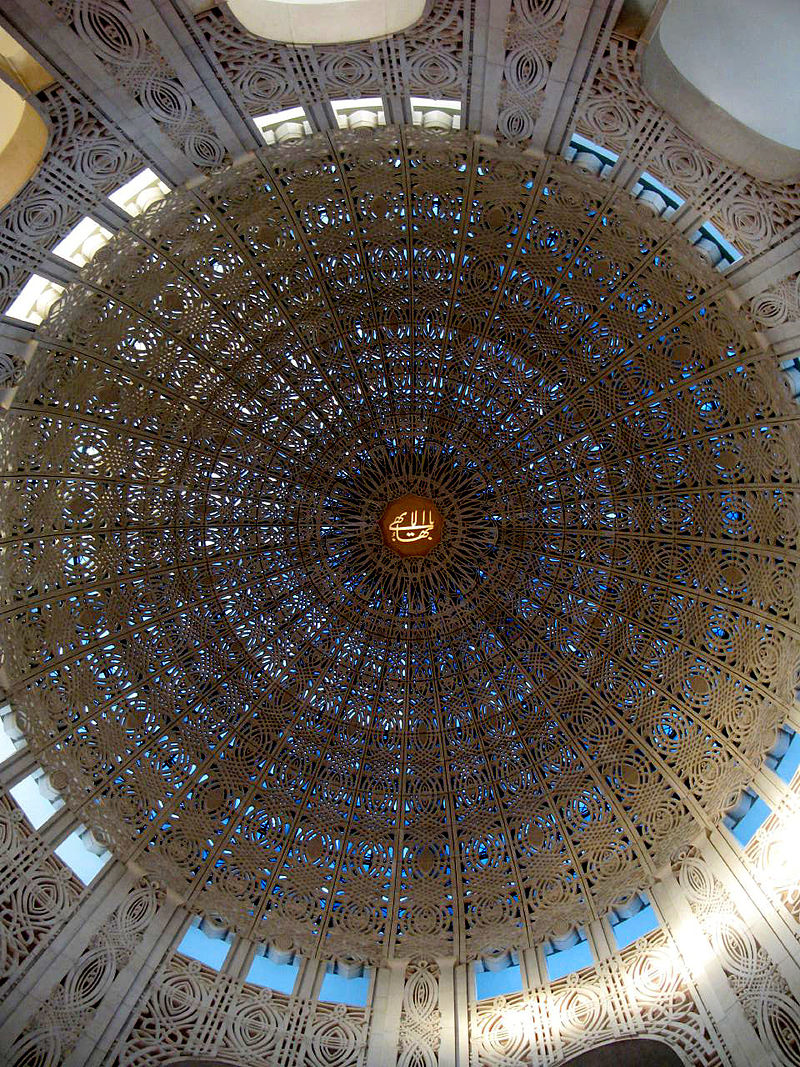
FROM:https://en.wikipedia.org/wiki/Bah%C3%A1%27%C3%AD_House_of_Worship_(Wilmette,_Illinois)
FROM:Architecture at the Bahá’í House of Worship for North America
Don’t you think it’s addictive?
Want to know more about the beauty of architecture?
Come and join our members to explore the beauty of architectural design.
覺得看得不過癮嗎?
想要知道更多建築之美嗎?
快來加入我們的會員,一同探索建築設計之美。
The above article is purely for appreciation and sharing purposes, as well as the construction of new technology and the public can be in-depth understanding of the information at the same time there are sources, will be able to query, no use of the document as a commercial transaction, if illegal, please inform the We will immediately remove the site, thank you for cooperation.
以上文章純粹作為欣賞及分享用途,以及將建築新型技術傳遞給與大眾能夠深入了解,同時資料還有來源,將可查詢,絕無使用該文件資料作為商業交易行為,如有違法請務必告知該網站我們將立即處理撤除,謝謝合作。

